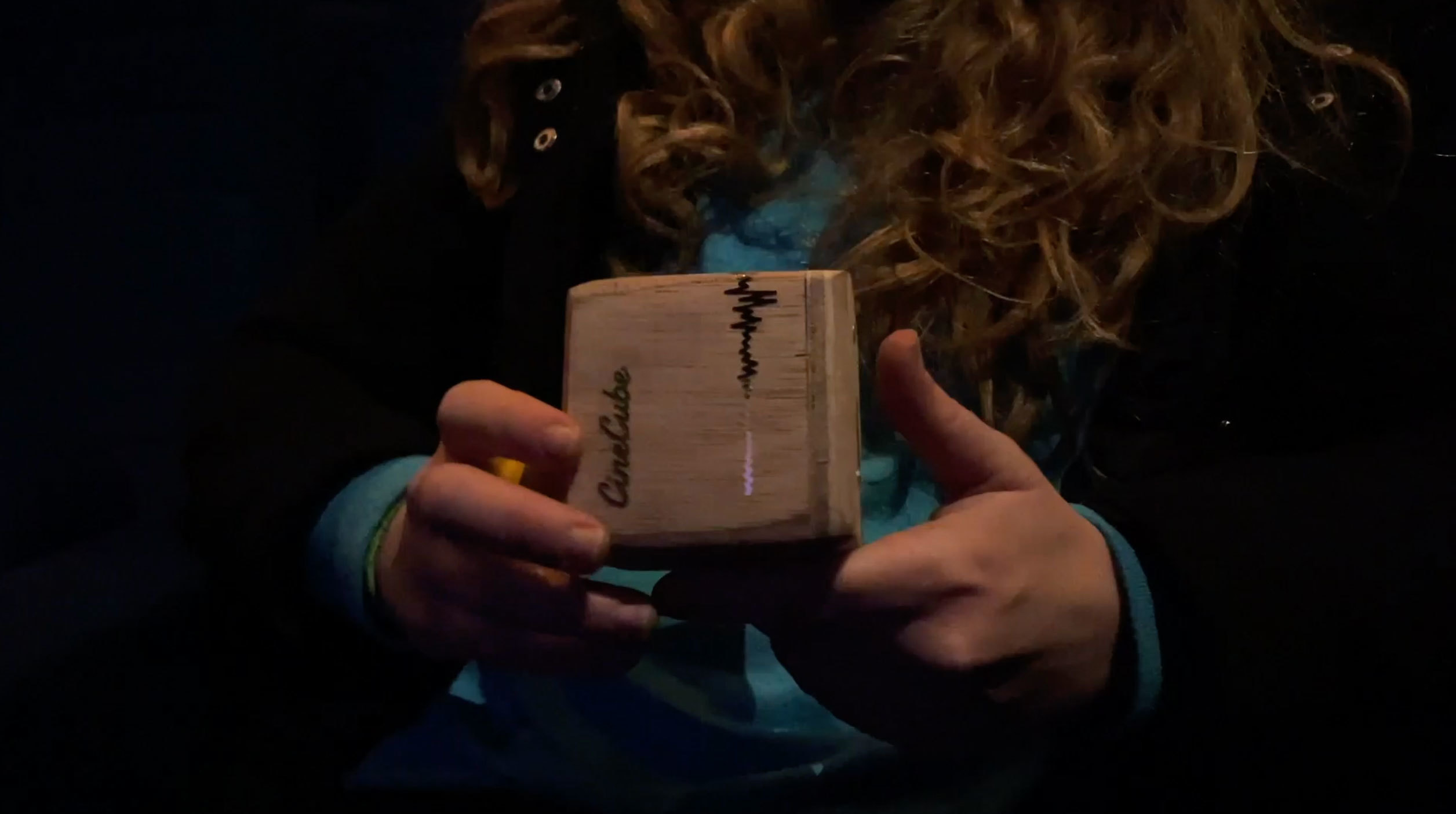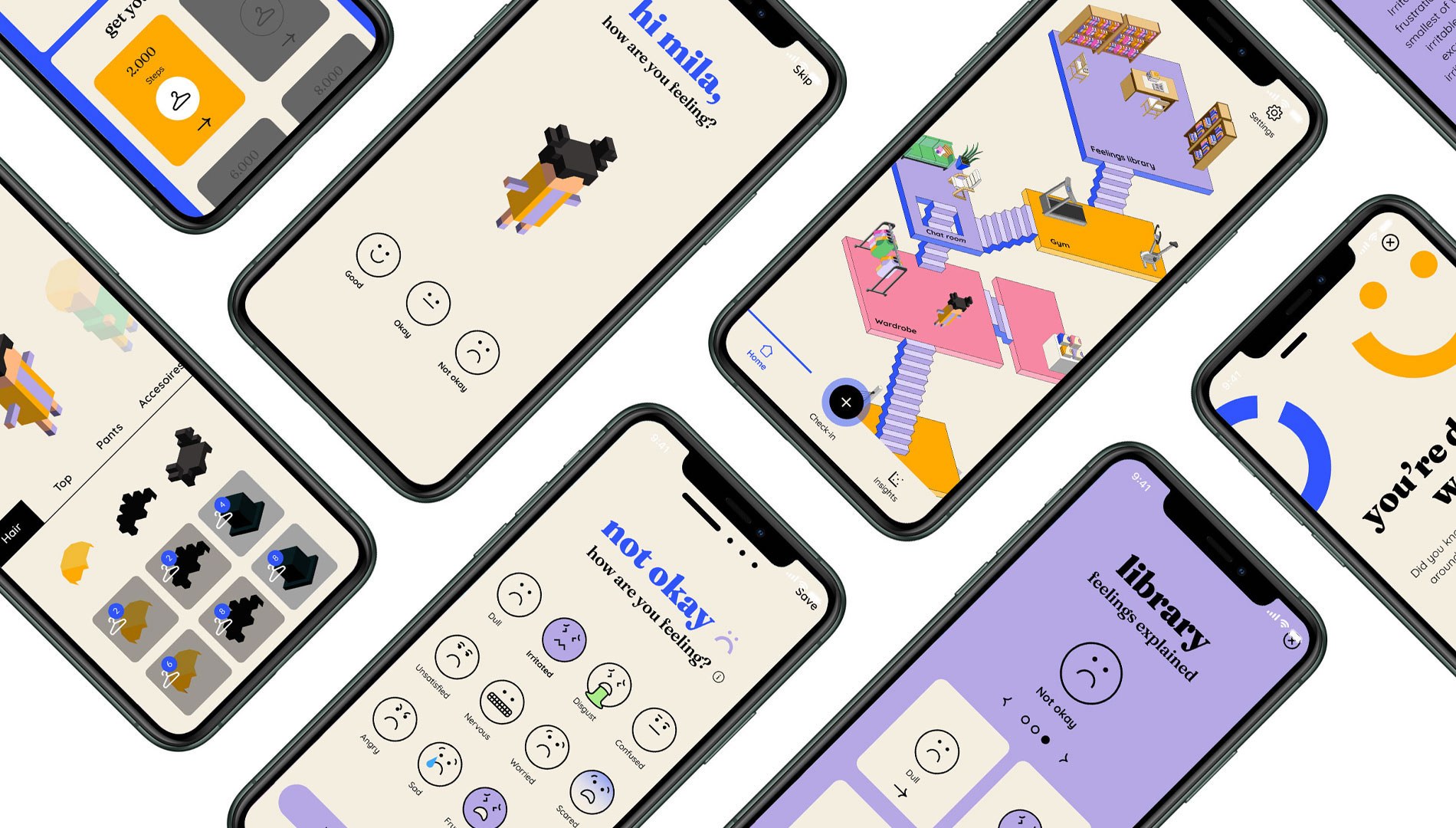
Inclusive Futures
Crafting Conversations on Energy Transitions in Haven-Stad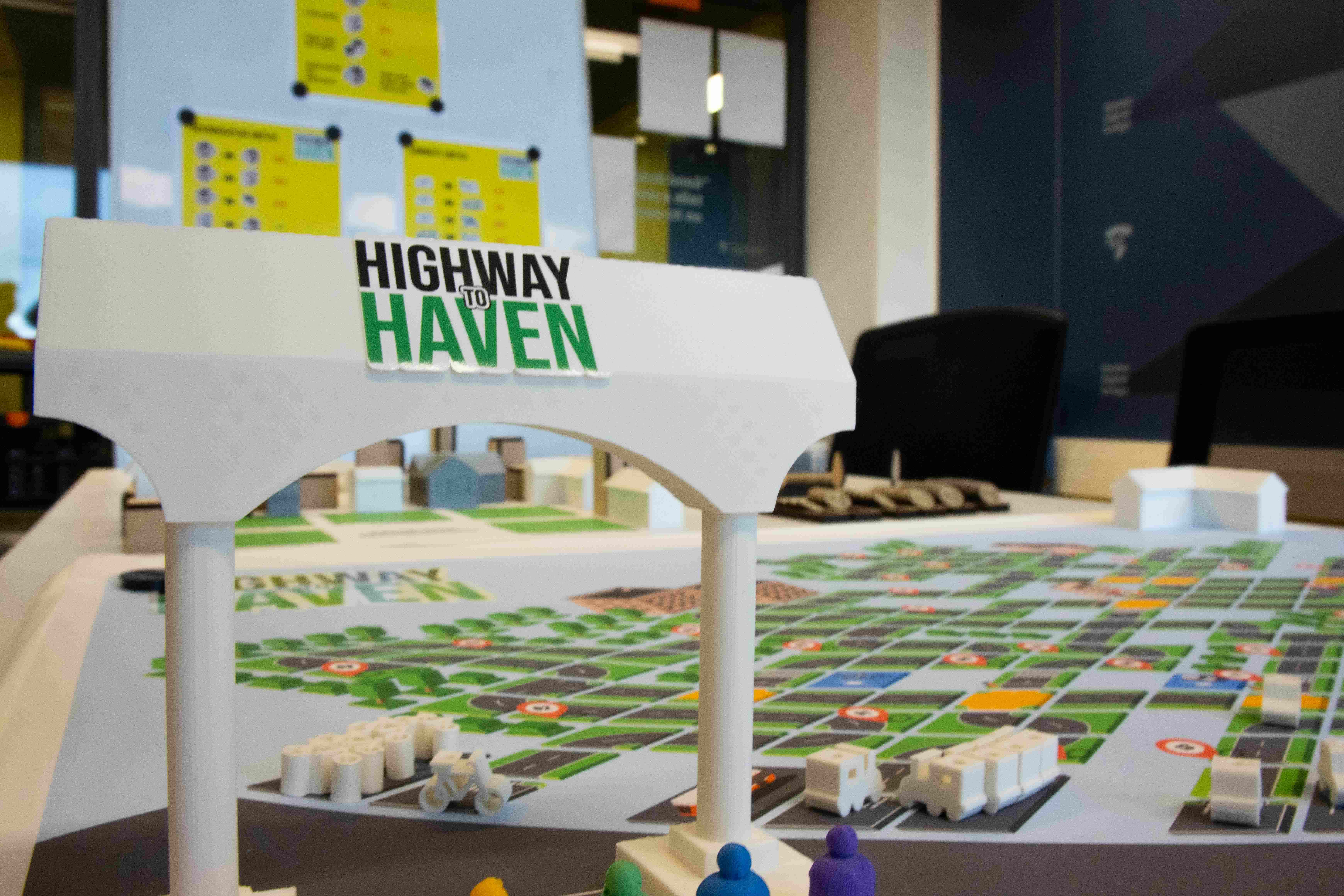
-
Client:
Civic Interaction Design Research Group / Transition-Scapes and Arcam (Architecture Centre of Amsterdam)
- Team:
-
Disciplines:
Concept, Speculative Design, Interaction Design
-
Schoolyear:
2023 - 2024
Haven-Stad is a huge new urban development in Amsterdam. A complex, and for many inhabitants, abstract transition that currently takes place behind closed doors. How might we involve future inhabitants in imagining new ways of living and working in Haven- Stad, especially in regard to the energy transition? Based on this question, student teams investigated what opportunities for living, working and play could occur when we change our energy consumption and production in the near future. And how potential future inhabitants of Haven-Stad could be involved in shaping these futures.
Arcam recently showcased a multimedia installation, unveiling the plans for Haven-Stad, an industrial area poised to become Amsterdam’s largest urban expansion by 2055. The integration of living, working, water, mobility, climate adaptation, and energy neutrality makes it a model for addressing spatial challenges. Transition-Scapes focusses on the energy transition which automatically became the primary focus of the student teams.
Students worked with designing ways to involve future inhabitants to be able to become engaged in imagining a sustainable and delightful Haven-Stad, crafting conversations around energy transitions, degrowth, new lifestyles and consequences of design decisions.
They made sure to include a diverse audience – people who are not yet part of Haven-Stad – and got them involved in participating in the conversation. Additionally, students investigated how these conversations can influence city planners in their designs and decisions for the future lay-out of the area.
It soon became clear that this question had many layers, multiple (shifting) stakeholders as well as a challenging political landscape. This was not a case of asking open questions about what people wanted. Instead, the projects centred around how to get people onboard with the necessary changes to build a climate and future resilient community.
Student teams struggled with finding a balance between introducing friction, making hard and abstract choices tangible and addressing fear of change. They had to work with situations of inequality, politics, power dynamics and some uncomfortable truths. The fact that this Master Digital Design cohort is itself a culturally diverse and multi-cultural group really helped shine different perspectives onto this project and managed to further the conversation on how we can build resilient communities.
In total, four projects rose from this brief.
Project 1: Interactive dinner table
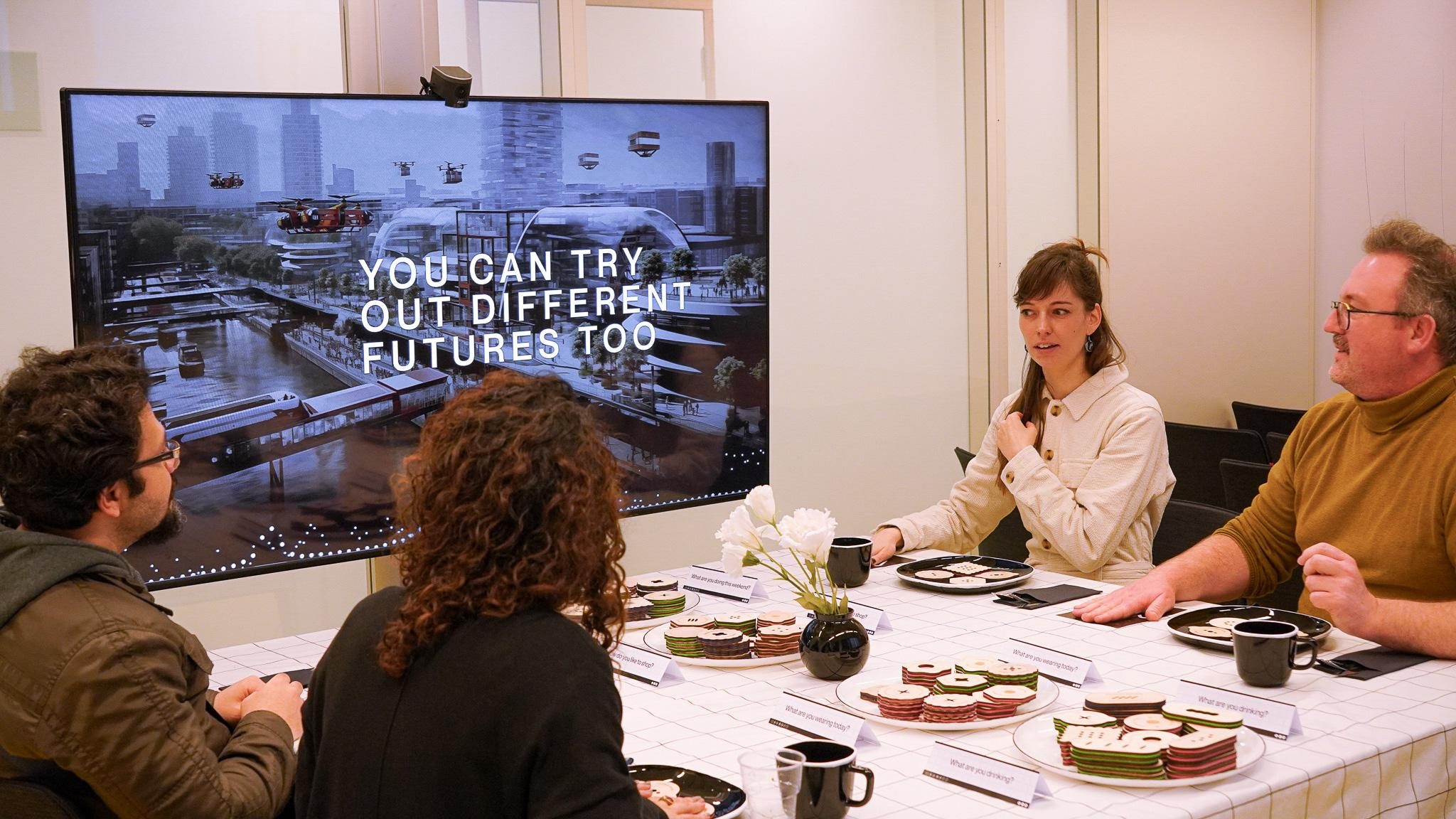
Team: Hugo Plazas Medina, Akhil Sukumaran, Julia Correia, Lila Nasim Masoumi
Team 1 facilitated a dinner-table conversation with a window view on Haven-stad, supporting conversations about individual and shared choices.
The team’s concept was centred around the primary issue that most plans for urban design and development are illustrated by maps. These maps are primarily made by and for professionals. The team stated that citizens are not able to envision future plans easily from a map, making them less likely to engage in conversations about future plans. To address this, the team created a setting to help spark conversations. A space and context in which people are used to bringing out opinions, hot takes, discourse, and even heated arguments: The Dinner Table. The table was laid out with plates for the participants and four trays filled with a selection of “snacks”. Each tray represented a lifestyle (food, drinks, leisure and shopping behaviour) and the snacks offered different choices in regard to that lifestyle.
All participants were requested to choose a similar amount of preferred snacks and put them on their plate. Based on these choices, the view outside the window changed into a speculative future view of Haven-Stad. The team analyzed the preferences and extrapolated the different lifestyles into an urban landscape of the future. Different preferences lead to different images. The images were created with Generative AI tools.
The participants were shown how much they individually align to the scenario shown outside, which proved to be a good catalyst for conversations about their decisions, the impact on their neighbourhood and their opinions on it.
Project 2: Welcome to Haven-Stad
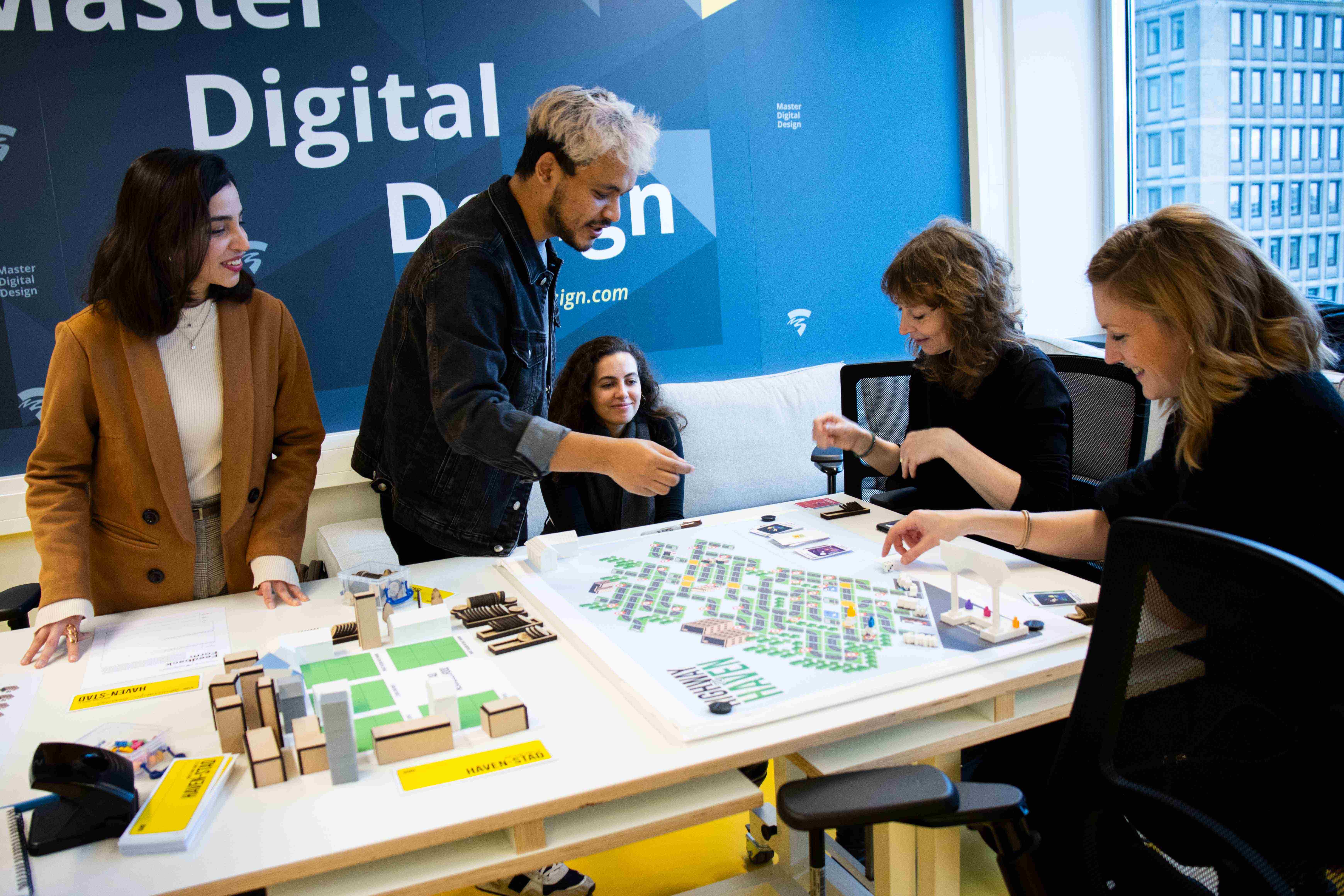
Team: Abhimanyu Gurung, Nadia Abou Marak Dit Broum, Ariadna de Lorenzo, Elham Keshavarzi
Team 2 engaged future inhabitants by playing a board game where some underlying complexities were raised in a way that made it easier to discuss the role of individuals, companies, government, and the power-relationships between them.
Players had to make lifestyle choices (i.e. ways of transportation) that influenced the way in which they were able to navigate the board. They were confronted with the consequences of their choices, which in turn, influenced the outcome of their play.
The game revealed an uncomfortable truth that players who would make the most ecologically conscious choices would be rewarded with a home in the least luxurious accommodation; the homes were smaller and most commodities would be shared with little to no private ownership. The public spaces in this scenario would be more pleasant with many green spaces and leisure facilities for all.
Players who were more ruthless and who made choices for their own benefit over the greater good would be rewarded with luxury accommodation and private ownership – provided they have the financial means to support themselves.
Getting participants involved in an engaging and fun game that was able to illustrate the consequences of decisions, and show the limitations of individual choices, facilitated really difficult conversations in a safe space.
Project 3: Enerplay
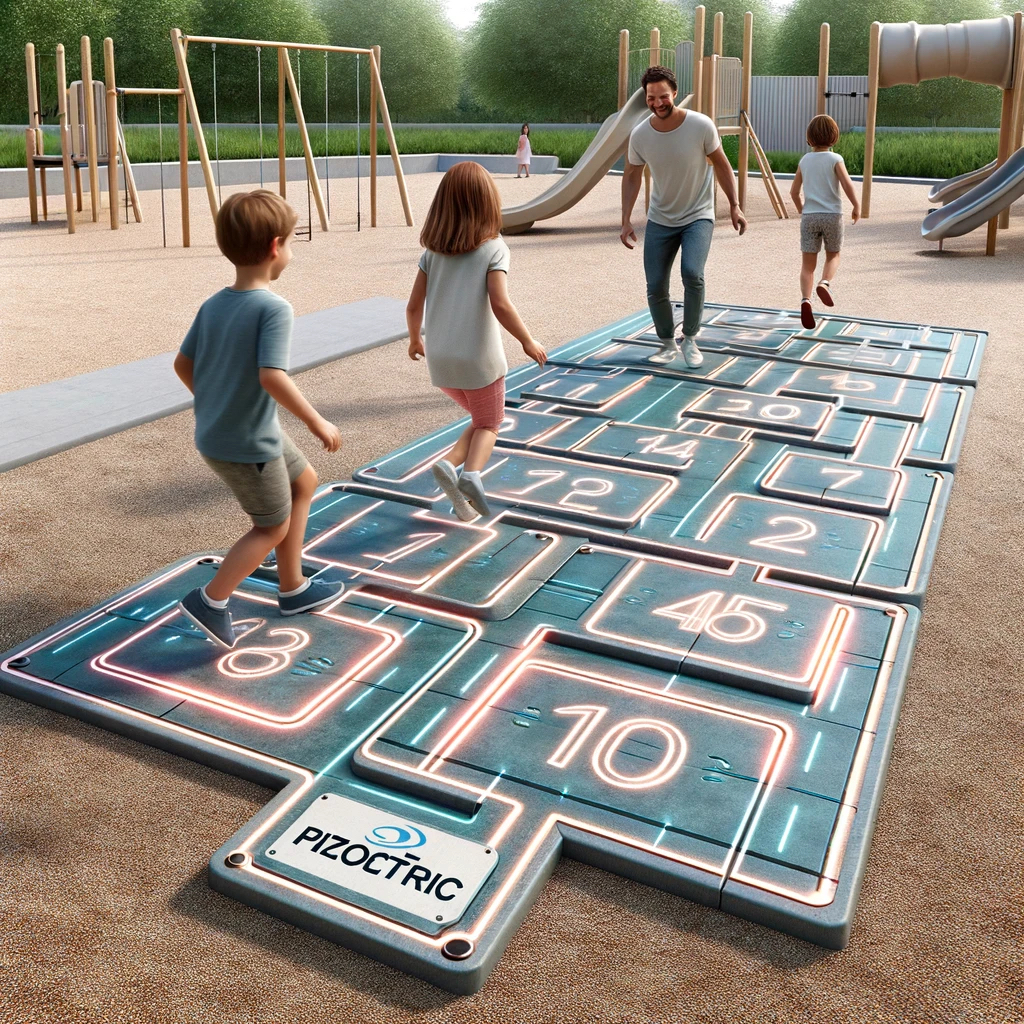
Team: Karim Marei, Tina Bota, Elahe Rezapour, Gelareh Mirzadeh
Team 3 raised awareness about alternative ways of harvesting energy, opening up the conversation about a human-powered future of Haven-Stad. The team did extensive research into Piezo electricity; a phenomenon where certain materials generate an electric charge in response to mechanical stress or pressure.
They also investigated ways to capture electricity from sound – considering Haven-Stad is currently one of the most sound- polluted areas in the Netherlands – which can be done by using a transducer that converts vibrations caused by noise into electrical energy. These different ways of capturing human made activities to generate power, resulted in a concept for a playground that could generate electricity for a neighbourhood, as well as raising awareness of a rich variety of ways in which the energy transition can take place, as well as adding value to a location.
The team wondered, why make sacrifices for our lifestyle when we can enhance the sustainability scheme to work smarter? We can look at every laugh, step, and movement within our lives as an untapped source of energy to cover all the future gaps in energy requirements. Imagine a playground where every act you do generates power; from piezoelectric tiles that harvest energy from footsteps to sound-absorbing materials that transform the sound waves to clean energy. We envision a future where every movement is a potential spark, a source of energy that can be harvested without any inconvenience to the people. Think about the lively pulses of Amsterdam powering its future.
Project 4: Nexhaven
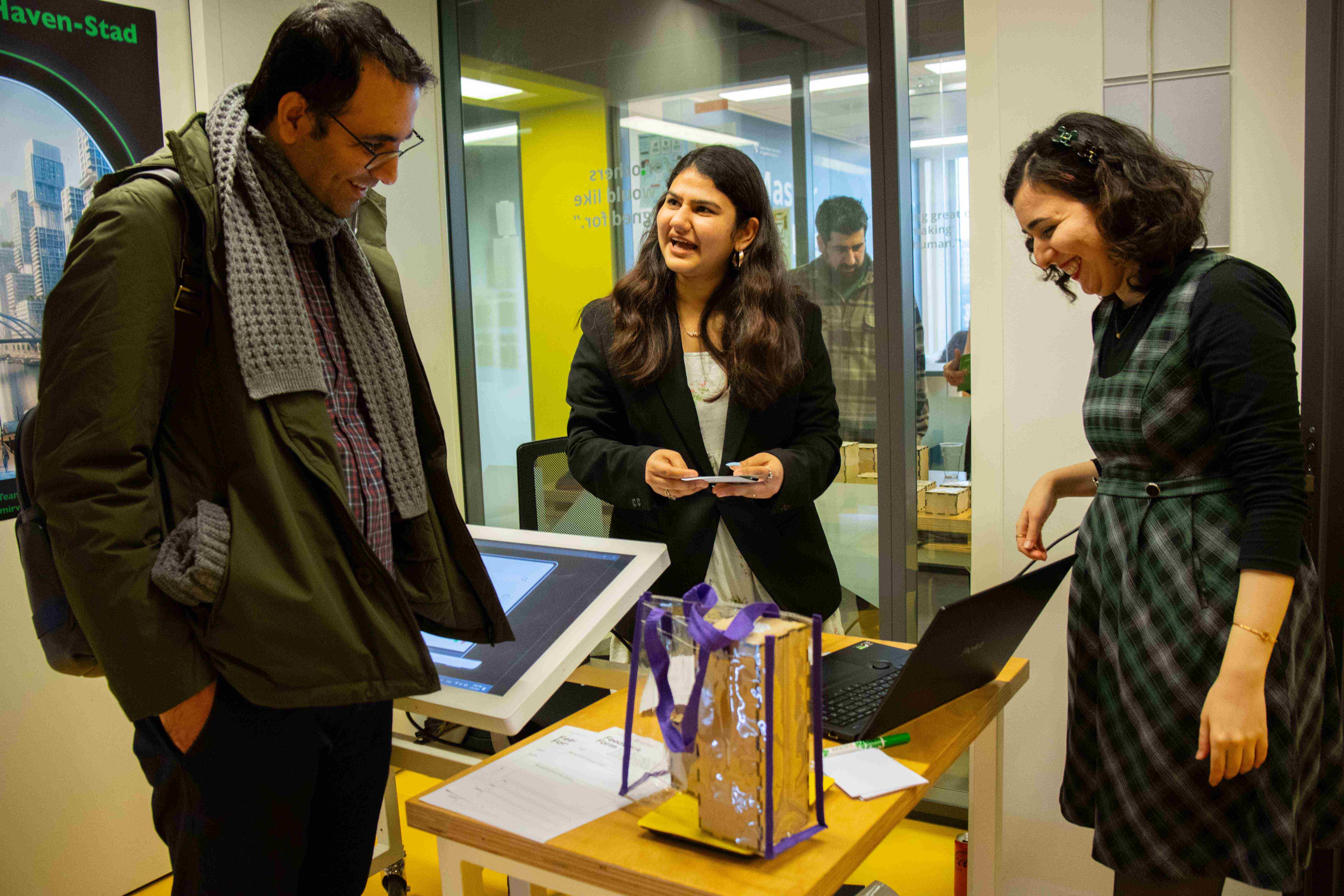
Team: Amirvala Koopayeh, Priyanka Nagar, Fatemeh Tarameshlou
Team 4 made the consequences of our individual choices painfully obvious, in a humoristic way, which forced individuals to take responsibility for their actions. The team used the analogy of checking-in for air travel and measuring your carbon footprint baggage, as well as making that visible to others. Participants could pack their habits, like how frequently they go on holiday, the distance to these destinations, dietary choices; do they like off-season avocados and do they indulge in meat? Would they buy plastic toys for their children, read paper books, use generative ai on a whim? These choices and their carbon footprint were made experiential by different size and weighted blocks in a transparent bag, to be visible to all, but certainly noticeable to the participants themselves who would literally have to carry the heavy weight of their choices with them.
After having selected their habits, participants would proceed to the check-in desk where the consequences of life-style choices would be marked in a personalised passport and by granting or denying access to Haven-Stad.
